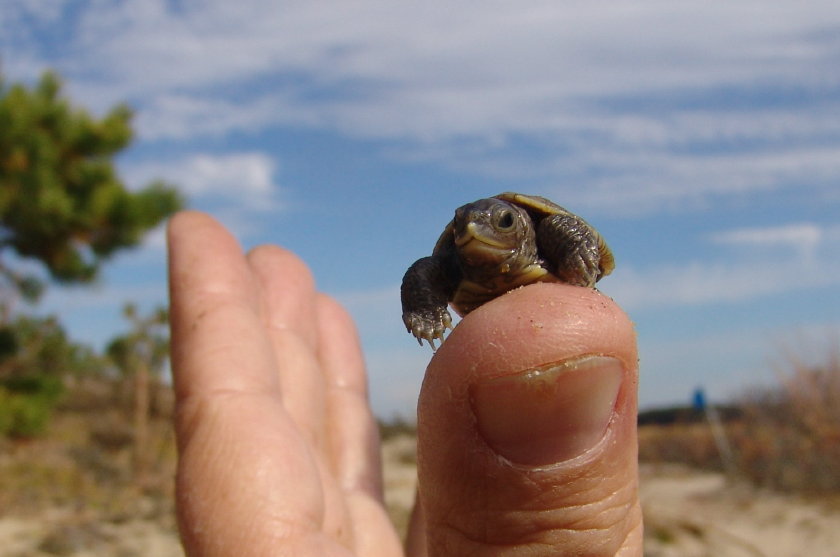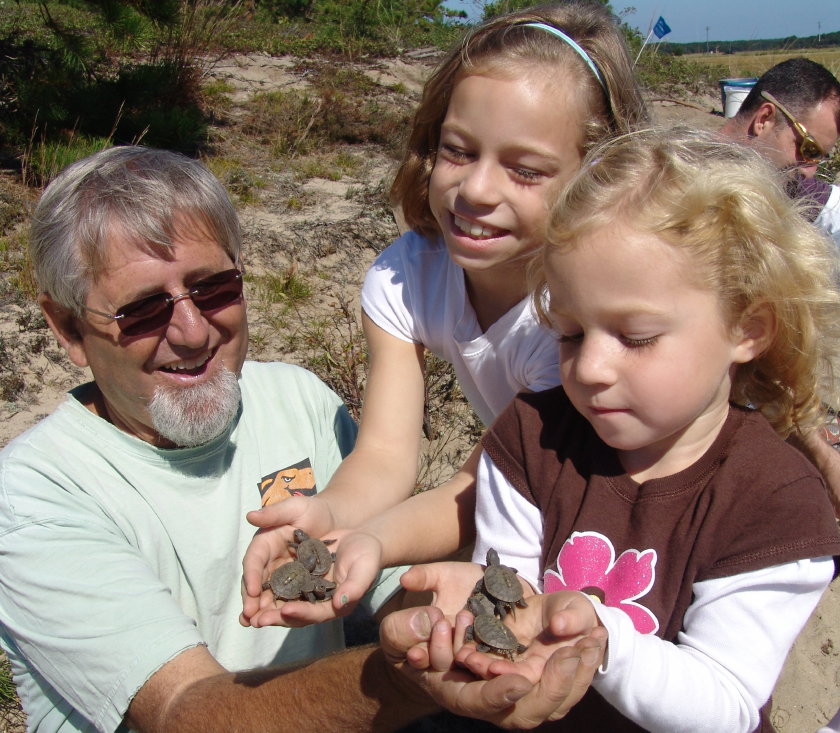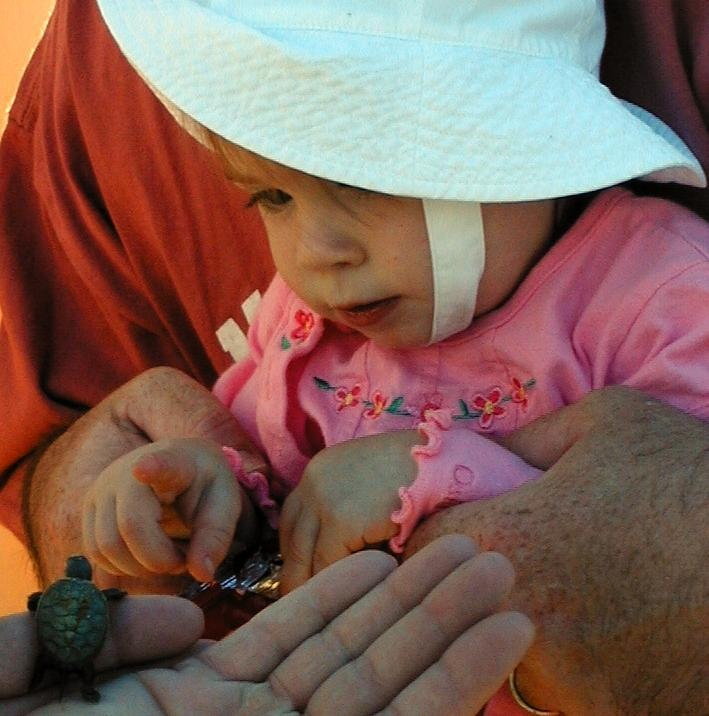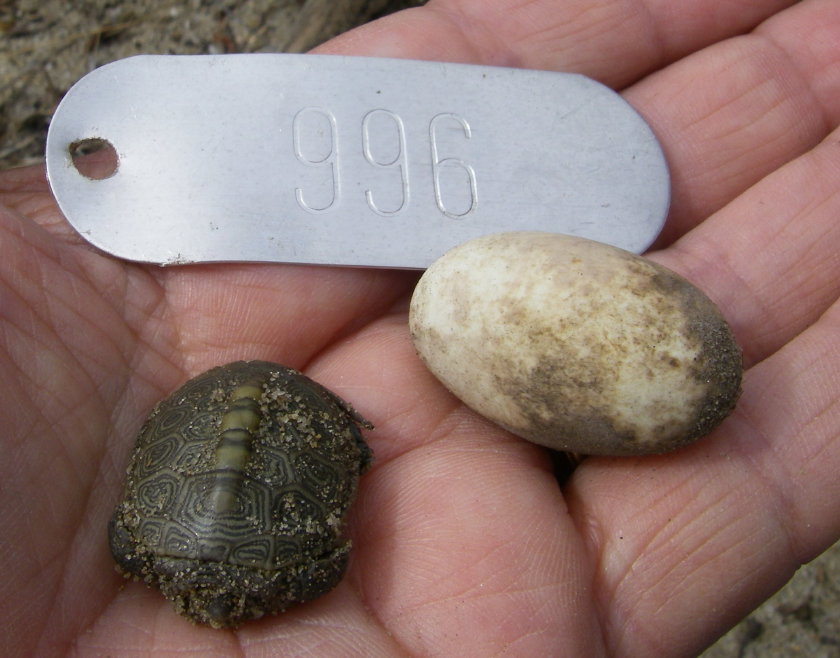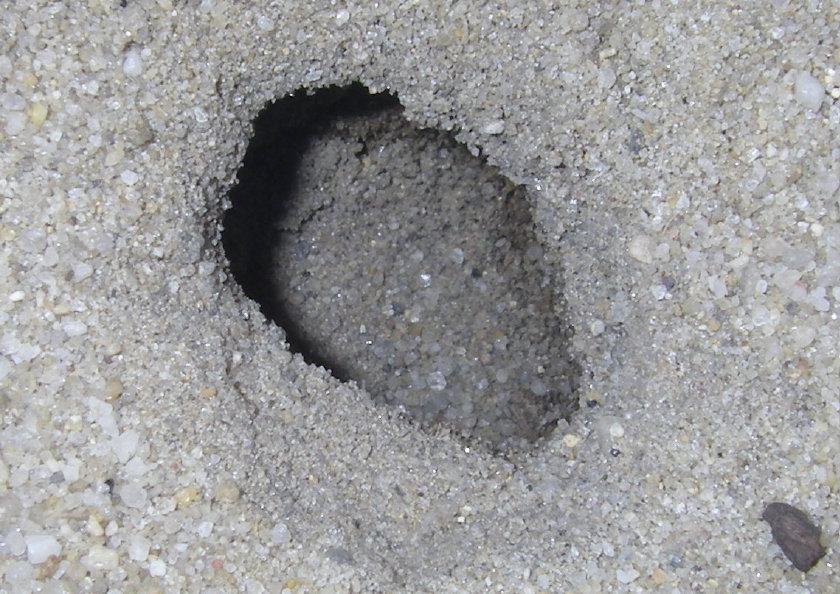Three Gram Second-Chance Terrapin Hatchling
“There’s always one more.” That’s the motto of the Paludal Posse, our terrapin research and conservation team on Outer Cape Cod. There’s always one more nest to find, one more nest to hatch, one more turtle in the nest, one more hatchling to emerge, one more turtle to save. In short, there’s always one more. And so it was proven again this weekend as we prepared our last batch of terrapin hatchlings for release on Tuesday, a promised mild October day.
Terrapin Hatchling and Second-Chance Egg from Nest 996
Sue counted 20 second-chance hatchlings soaking in 70F water to prepare for their sprint to freedom. Second-chance hatchlings? What the heck are second-chance hatchlings? As we harvest emerging nests that have mostly hatched and other nests that have been exposed by predators, we often find a couple of unhatched eggs left behind. Most of these eggs are in good shape and need only a couple days more incubation. A few, though, look pretty sad; dimpled, dented, dehydrated, discolored, and so on. These eggs wouldn’t make it in the wild. Still, we prefer to give every turtle egg a chance even if it has only a small probability of survival. So, these long-shot eggs go into our mystical, magical second-chance bucket, filled wtih clean, moist natal sand and warmed first naturally in our sun room until early October and then under a heat lamp in our lab until successfully hatched or all hope is exhausted. We always have Halloween hatchlings, usually have Thanksgiving babies and occasionally find a pair of cute dark eyes staring up at us on Christmas morning. (ASIDE: Can there be a more powerful holiday message?)Â
So, as Sue collected the 20 lucky babies for their trip back into the wild, she scanned the second-chance bucket and yelled in exclamation, “We’ve got another one!” To which I sagely replied, “Yep. There’s always one more.”
Perfect October Day for Second-Chance Hatchling Release
We made it to Turtle Point on Lieutenant Island while the weather held; 63F, gentle breeze and warming sunshine. But a careful look at the clouds streaming above reminded us that a storm front approached.Â
2nd Chance Hatchling and 20 Siblings Released at Turtle Point
The sand at Turtle Point had baked through the morning and reflected warmth as we sat down to release our 21 charges. Placing them in a single bunch near the wrack line on the downward sloping dune, we watched as they scattered in random directions and power bursts. Soon they had all disappeared into the nursery surroundings, some into upland vegetation, others into downland wrack and Spartina salt marsh, and still others burrowed into the warm dune sand.
Last Sailboat Dances with Northeast Blow in Blackfish Creek
Within an hour the weather had closed in.  The cold front arrived with gusts whistling across the narrow Outer Cape peninsula from the North Atlantic. Clouds massed and grayed; white caps appeared; and we were doused in cold droplets whether from rain or briny spray we couldn’t tell.
“There’s Always One More” Egg in Second-Chance Bucket
Back in our warm, comfortable lab office Tuesday evening we inventoried our terrapin assets. Tanks empty and ready. Second-chance bucket filled with potential. And our hopes high for one more miracle.



